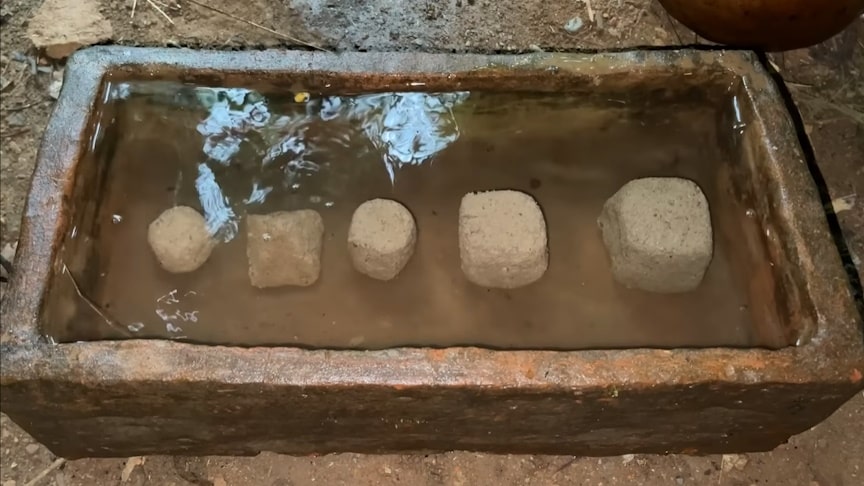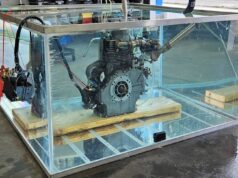I have made wood ash cement before under the assumption that it was the calcium in the ash that gave it its cementitious properties. It may however be a type of geopolymer cement, where the cement is activated by and acid or a base (in this case a base). The acronym NASH is used to remember the material needed: sodium, alumina, silica and H2O. All of these are present in the materials used here. I did some experiments to see how to produce the cement using ash and fired clay from broken bricks.
source.image: Primitive Technology
The first method was to take ash from a cold fire and form it into pellets. One pellet was left aside to dry while the others were calcined by firing them in a forge with wood. The calcined pellets were then mixed with terracotta in different proportions (ash: clay 1:0, 1:1, 1:2, 1:3). All samples survived a water test after setting for a week except for the sample made from cold ash that had not been calcined. This demonstrates the need to calcine the ash at a high temperature before use.
Next I built a furnace with a grate for calcining ash to prove it could be done with natural draft rather than the more laborious blower method. An ash brick or clinker was made from a cold fire and was placed on the grate and fired. The clinker was then taken out, mixed with terracotta and formed into various shapes. One sample was mixed with sand as an alternative to terracotta. The samples all survived the water test after 2 days of setting though the sand sample isn’t as strong as the terracotta ones.
Advertisement
Finally, I took the ash from the furnace and used it as is without forming it into a clinker and calcining it. My theory was that ash from the furnace gets hot enough just from burning on the grate that it does not need further calcining. The ash was mixed as is with terracotta and left to set for only 6 hours. It passed the water test without dissolving suggesting a quick setting time. These experiments have shown how it might be possible to scale up and simplify the production of ash cement. I’m considering it as an alternative to brick making as it’s potentially a simpler method (no brick forming, hours stoking the kiln etc.). The structures would have to be adapted to the new material and might be insitu formed walls. More experiments need to be done.











